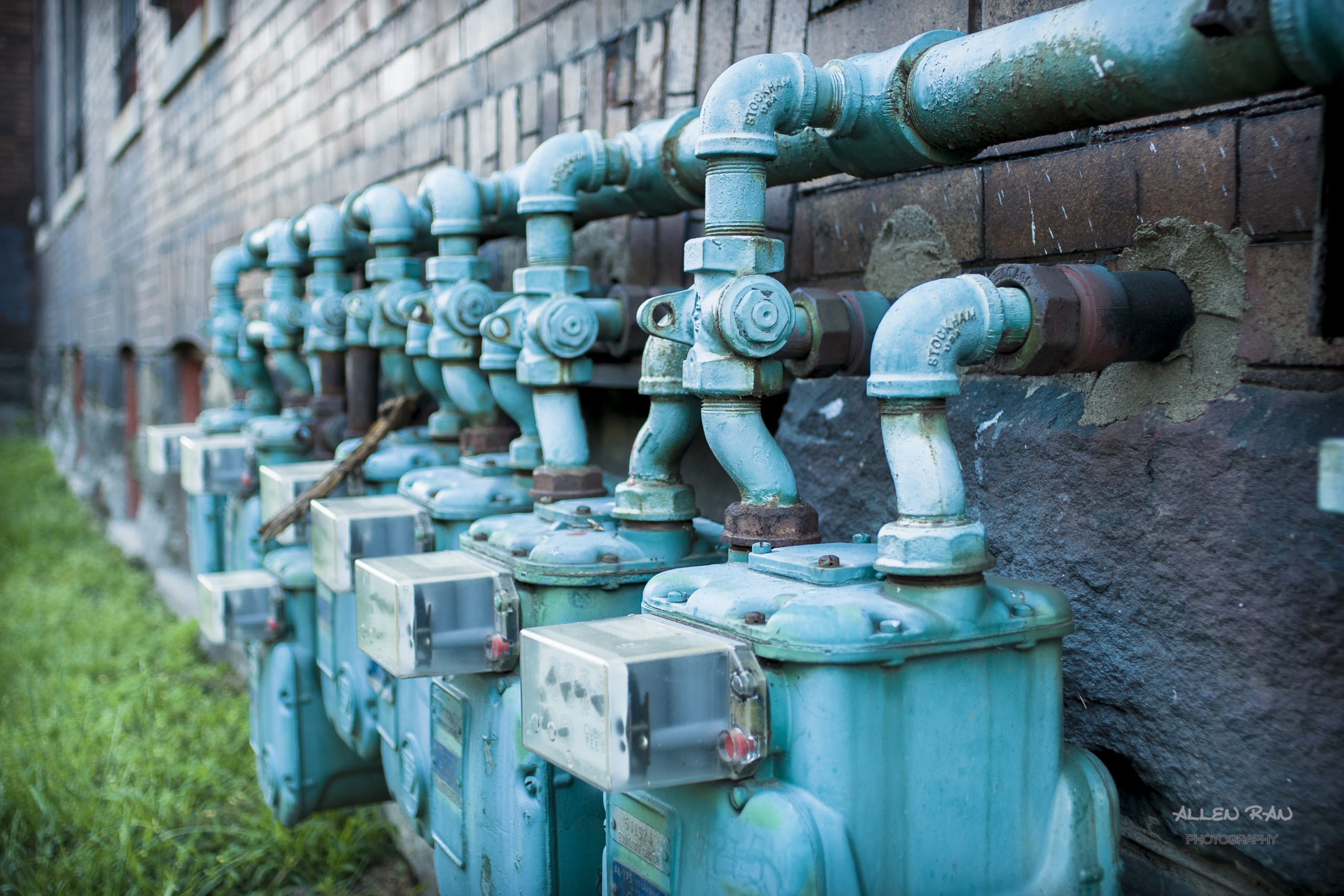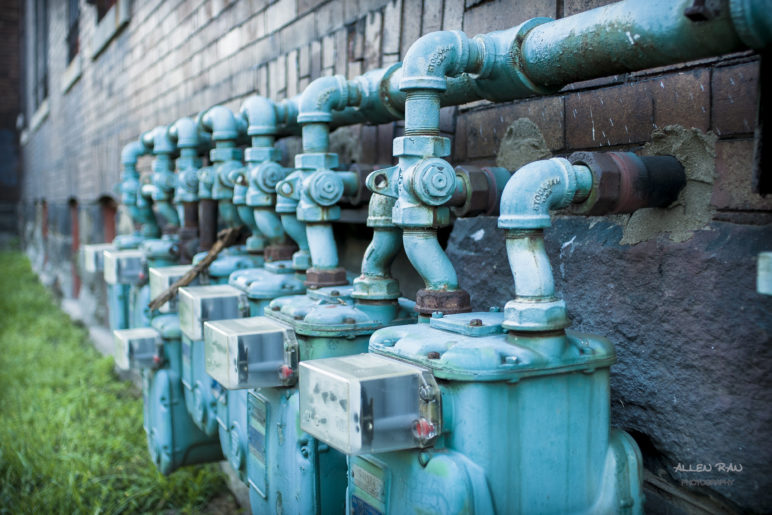These days most of us are staying home to shield ourselves from invisible airborne germs. Perhaps it is a helpful mindset for thinking about another invisible menace—one that plays a meaningful role in destabilizing the climate: myriad small methane leaks from gas pipelines that stretch like a giant spiderweb beneath our cities. Over time, small leaks of this potent greenhouse gas add up to a big problem.
The US natural gas system encompasses hundreds of thousands of wells, hundreds of processing facilities, and more than one million miles of transmission and distribution pipelines. Gas leaks occur across the entire life cycle of the natural gas value chain (exploration, production, processing, transmission, storage, and distribution). In its most recent analysis, the EPA estimates that leaks from the natural gas system account for nearly one-quarter of all methane emissions in the US, or the equivalent of more than 176 million metric tons of carbon dioxide per year—roughly the annual greenhouse gas emissions from Oregon and Washington combined. More than half of the gas leaked is emitted during drilling and fracking operations, but the remaining 40 percent is emitted in other stages, including distribution to customers.
In the US, gas utilities are legally required to stop leaks that endanger people (for instance, when gas leaks in a building are in concentrations high enough to ignite and explode), yet they face much less stringent regulation when it comes to addressing gas leaks that don’t pose an immediate safety hazard, such as a small leak from an outdoor meter. But it’s a problem worth addressing because “nonhazardous” gas leaks are quietly increasing greenhouse gas levels in the atmosphere, and their ultimate impact has yet to come.
Federal regulations require the natural gas industry to report an annual inventory of leaks. This data suggests that utilities have a big leakage problem. Williams Company, which operates the Northwest’s gas transmission pipelines—the big lines that move gas into the region from afar—reported only two leakage incidents in 2019—one near Boise, Idaho, and one in Spokane County, Washington. Together, these locations leaked an estimated 57,000 therms of natural gas—about the amount that 65 homes would use in a year. (In addition to these leakage incidents, the Williams-owned pipeline system probably had—and still has—numerous small persistent leaks.) Those figures are dwarfed by leaks documented in reports from the four large natural gas distributors (Avista, Puget Sound Energy, Northwest Natural, and Cascade Natural Gas), which estimate that 11 to 16 million therms of unused natural gas escaped into the air from leaks in 2018. That’s roughly a year’s supply of gas for 17,000 homes vented straight into the atmosphere.
One vexing and potentially dangerous cause of leaks is third-party excavation, such as when a construction crew damages a pipeline with a backhoe while excavating a jobsite (all the more reason to pay attention to the 811 Call Before You Dig campaign). In fact, excavation leaks account for more than half of all gas leak incidents reported by utilities. Many of these leaks are likely smaller volumes because they tend to get fixed immediately. Still, more stringent penalties for excavation damage might make it possible to reduce these leaks.
The bigger problem, however, is built into the system, and it is largely a problem of economics. Utility rate structures are designed in ways that disincentivize making repairs to reduce the loss of natural gas. Natural gas is sold to customers “at cost,” and gas distributors (i.e., utilities) do not charge a fee or earn a profit on the fuel they sell. The operation and maintenance of the pipeline system, including the cost of the leaked gas, is passed directly to customers. Because utilities cannot increase profits by merely reducing gas loses, there is little financial incentive for them to plug leaks in the system; after all, someone else is bearing the full cost of that wasted gas.
Utilities make their profits from earnings on their gas infrastructure. For every dollar a utility invests in building pipelines, it earns a rate of return from customers. (State regulators determine that rate—a plus for utility shareholders, who are shielded from much of the investment risk.) If a utility spends more than planned on operating and maintenance expenses, it might face delays before it can recoup reimbursement and might bear an additional burden of justifying the expense to skeptical regulators. The result is that utilities are hyper-focused on the bottom line when it comes to maintenance. And when they determine where to focus their investments, they tend to prioritize capital projects (building new pipelines, for example) because these investments qualify for profit earning.
Regulatory bodies like PHMSA and state utility commissions have established rules and requirements that force utilities to make some investment in maintaining their gas pipelines, but a significant portion of a utility’s spending to plug leaks is discretionary and therefore often a prime candidate for cuts when utilities decide they need to increase profits. The Northwest likely has hundreds of thousands of “nonhazardous” leaks, but it’s perfectly allowable for utilities to have a lax repair schedule or even cut repair funding when the leaks don’t endanger public safety.
There is some hope on the horizon. In 2020 the Washington State Legislature recognized many of these long-standing problems and passed HB 2518, which Governor Jay Inslee recently signed into law. It’s a step in the right direction, and one that other states should emulate. The new law will lower the financial hurdles for utilities to invest in repairing leaks by allowing them to more quickly recover the costs of repairs. Furthermore, starting in 2021, utilities will be required to report gas leak data to state regulators that will then make aggregated summaries available to the public. (This will be a treasure trove of information for climate hawks looking to clean up their cities’ carbon emissions.)
Cleaning up Northwest cities’ leaky methane problem is certainly doable, but it requires attention. Local governments already have several underused tools to more effectively regulate fracked gas operators. Meanwhile, legislators can make fixes to administrative law to encourage prompt repairs of “nonhazardous” leaks. (In Washington, strengthening WAC 480-93-18601 would be one place to start.) State regulators can then be empowered to more assertively question the prudence of utilities building new pipeline infrastructure when they have a maintenance backlog on their aging distribution pipelines.
Plugging the leaky pipelines that release methane into our cities and our atmosphere could be a straightforward approach to reducing climate emissions. And because it is inexpensive to implement and will create much-needed jobs, it may be exactly the sort of approach we need as the economy struggles in the wake of the coronavirus pandemic.












ReynaldoCarrillo
Leaks are how revenue and health are lost slowly and sure as can be thought. Keep on plugging.
Cyrus Blake Crewford
There have been gas detectors for as long as people have been aware of the harmful effects of gases in confined spaces.